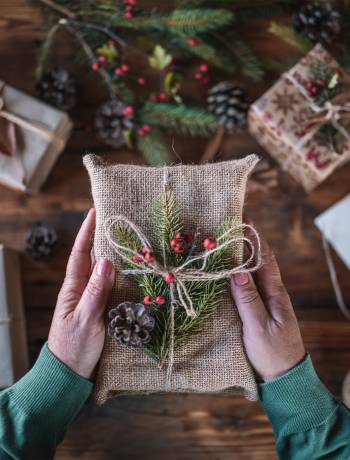Homes
How to keep your festive houseplants alive for longer
by Martyn Cox

Poinsettias, cyclamen, Christmas cactus… festive houseplants are the living, sustainable decorations every home can enjoy. And with the right care and attention, they'll last well into the new year. Here's how to keep seven of the most popular Christmas houseplants alive long after the tinsel gets packed away.
1. Poinsettias
Poinsettias are the UK's favourite seasonal houseplant, with around 8 million of them snapped up annually. They don't need a great deal of light and are ideal set in the middle of a warm room. Water well and allow compost to dry before watering again, adding a few drops of liquid plant food each time. Once their bracts have faded, many people ditch poinsettias, but it's possible to enjoy a repeat show next winter. Prune stems down to 10.5cm in April and move plants into slightly larger pots. Place in a cool, shady spot outdoors over summer, and bring back indoors in early September, keeping them in a cool place out of direct sunlight. They need about 14 hours of darkness a night to produce their showy bracts, so place a box over the plant in the evening and remove in the morning – do this in late September or early October. After eight weeks, remove the box and display plants as normal.
2. Moth orchid
Moth orchids are happy on an east-facing windowsill, or another bright spot that is not in direct sunlight, and are unruffled by central heating as long as you spritz leaves with water every day. The usually green, exposed roots of moth orchids turn silver when they are dry. At this point, give them a drink using lukewarm water and allow excess liquid to drain. After all flowers have withered, cut the stalk back to the second leaf joint from the bottom. Another stalk should form and produce more buds.

3. Cyclamen
Instantly recognisable thanks to their candy-coloured, swept-back petals held on short stalks above a nest of marbled leaves, Persian cyclamen (cyclamen persicum) should flower for close to two months with care. Display them in a light spot in cool room (a northfacing windowsill, front porch or barely heated conservatory are perfect) and keep compost damp but not wet. To get them to bloom again next winter, allow the foliage to die back in summer by withholding water. Only start watering again when new growth appears.
4. Hippeastrum
Hippeastrums (or amaryllis) are flamboyant perennials grown from big bulbs. Follow the container planting instructions on the packaging and set the potted-up bulbs on a south-facing windowsill. Water occasionally to prevent compost drying out and feed weekly with liquid tomato food once flower buds appear. Flowers last for about three weeks before they fade. Allow the stalk to die back and continue watering. In early autumn, leaves will start to turn yellow. Let the compost completely dry out and the foliage die back. When flower shoots appear in a few months' time, start the growing process again.

5. Indoor azalea
Unlike their spring-flowering outdoor cousins, indoor azaleas are not hardy – they are divas that need plenty of attention! They suffer in warm rooms, preferring an unheated porch, spare room or greenhouse. Water regularly with rainwater (or distilled water), feed weekly with azalea fertiliser and deadhead fading flowers. Once the floral show is over, move into a slightly bigger pot using ericaceous compost. Reduce watering until new buds appear later in the year.
6. Bromeliad
Bromeliad is an umbrella name for a host of flashy plants that largely come from South America, including aechmea, guzmania and vriesea. Give plants a light position but not in direct sun as many are from rainforests, they thrive in steamy bathrooms. Water regularly, allowing compost to almost dry out before giving more. If growing aechmea, fill the rosette with fresh water every month. Misting leaves routinely keeps them happy by raising humidity.

7. Christmas cactus
These plants like bright indirect light, such as an east-facing windowsill or a spot set back from the windows in a south-facing room. Water plants regularly during flowering and spray foliage with water to raise humidity. Reduce the frequency of watering once blooms start to fade in mid-winter. In April, start to feed with a liquid fertiliser, increase watering and repot, if necessary. Plants are happy set outdoors in summer, if they are in a sheltered spot.












